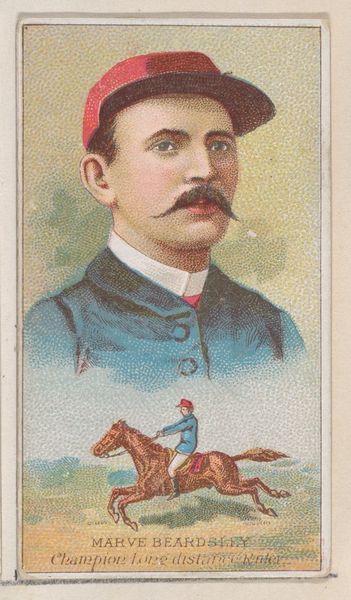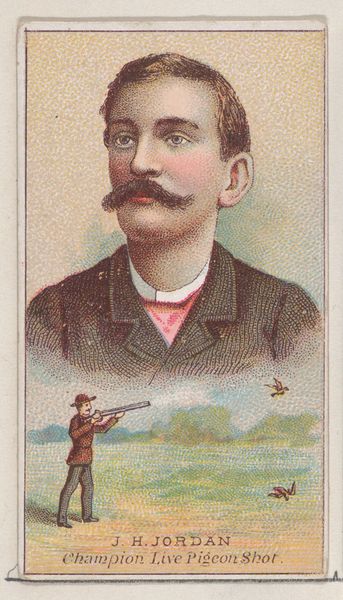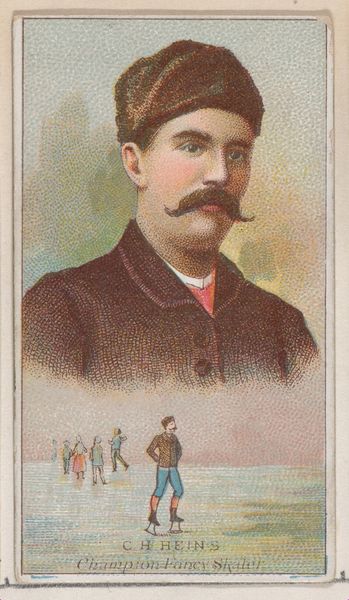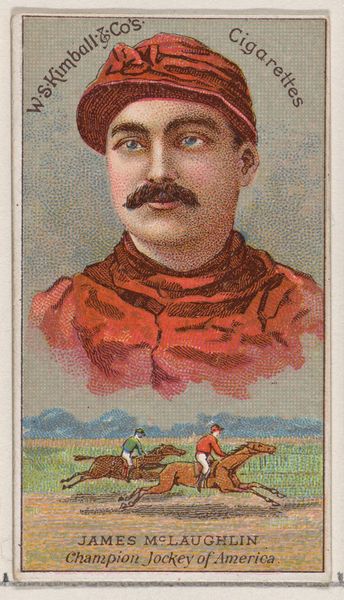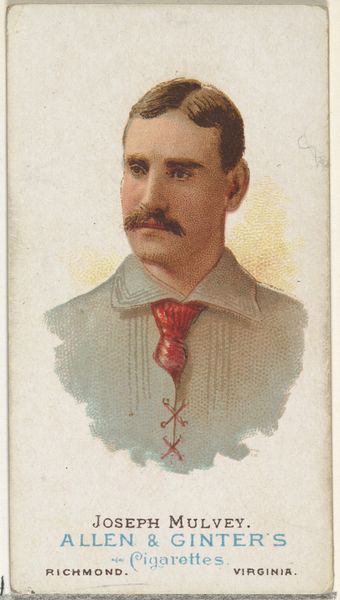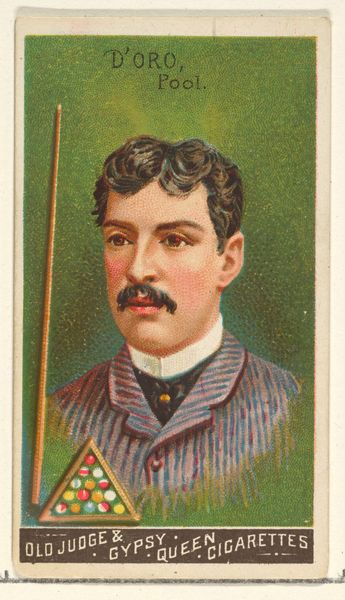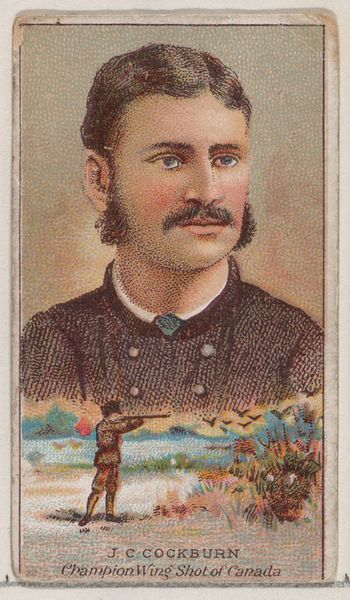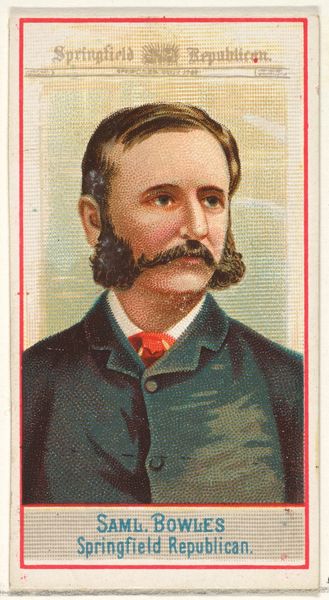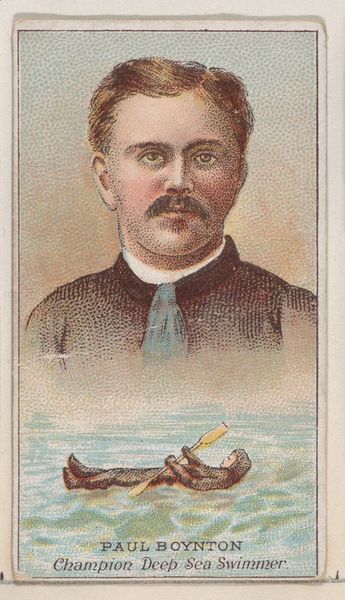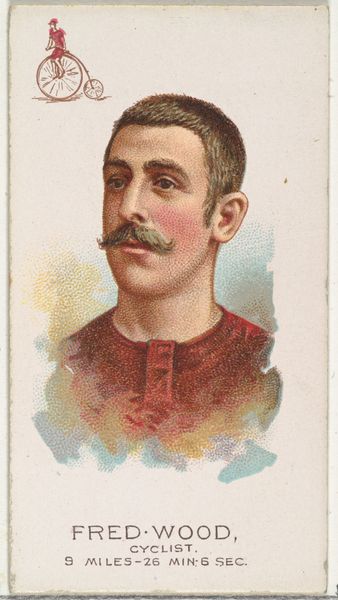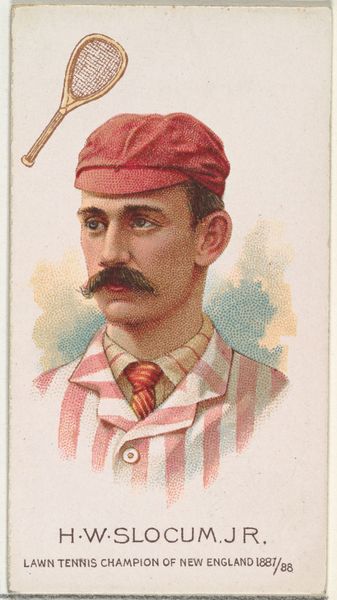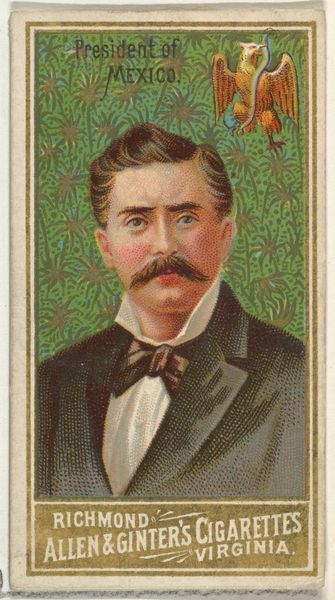
John Murphy, Champion Driver of Trolling Horses, from the Champions of Games and Sports series (N184, Type 1) issued by W.S. Kimball & Co. 1887
0:00
0:00
drawing, lithograph, print
#
portrait
#
drawing
#
lithograph
# print
#
caricature
#
oil painting
#
genre-painting
#
academic-art
Dimensions: Sheet: 2 11/16 × 1 1/2 in. (6.8 × 3.8 cm)
Copyright: Public Domain
Curator: Here we have an intriguing chromolithograph print dating back to 1887. It is from the series “Champions of Games and Sports” issued by W.S. Kimball & Co., and it features John Murphy, Champion Driver of Trolling Horses. Editor: My first impression? It has an odd, almost unsettling intimacy despite being so small. That intense gaze and then the diminutive horse-and-driver tableau below – a strange disjunction. Curator: The lithographic process allowed for mass production, making these cards readily available as inserts in cigarette packs. The cards themselves are paper, a humble material elevated through the artistry of the printmaker's labor. Think about the consumption habits tied to these objects, ephemeral by nature but carefully preserved. Editor: Right, and Kimball’s champion series – look at how athleticism and leisure are branded and commodified through the portrait. This is a champion immortalized via nicotine. Also note how Murphy’s rather impressive moustache almost overshadows the racing scene; it serves almost like a separate emblem of masculinity and success. Curator: And don’t underestimate that miniature scene itself. Trolling horses, or harness racing, were a popular spectacle at the time, so Kimball exploits an established market by featuring athletes. It collapses notions of high and low art, placing this "champion" on par with established portraiture through the visual rhetoric. Editor: I see him too as an archetype, the mustachioed athlete. What’s striking is how this ordinary moment of consumption aimed to both reflect and shape perceptions of ideal American masculinity. Curator: It reminds me of the blurred boundaries between craft, consumerism and social life at that time, how industries leveraged popular passions to secure profit and build visibility. Editor: Indeed. By fixating on certain images of success and their reproduction, these manufacturers imprinted a vision of ideal, rugged individuals to market cigarettes and cement particular associations into the minds of buyers. It is also interesting to explore these commercial objects as memory, how a fleeting figure achieves representation, though through what apparatus. Curator: Examining it today, it becomes a tangible record, isn't it, a physical remnant of a certain social and manufacturing moment now quite distant. Editor: Yes, revealing a rich mix of celebrity culture, marketing, and the subtle propaganda of American ideals.
Comments
No comments
Be the first to comment and join the conversation on the ultimate creative platform.
